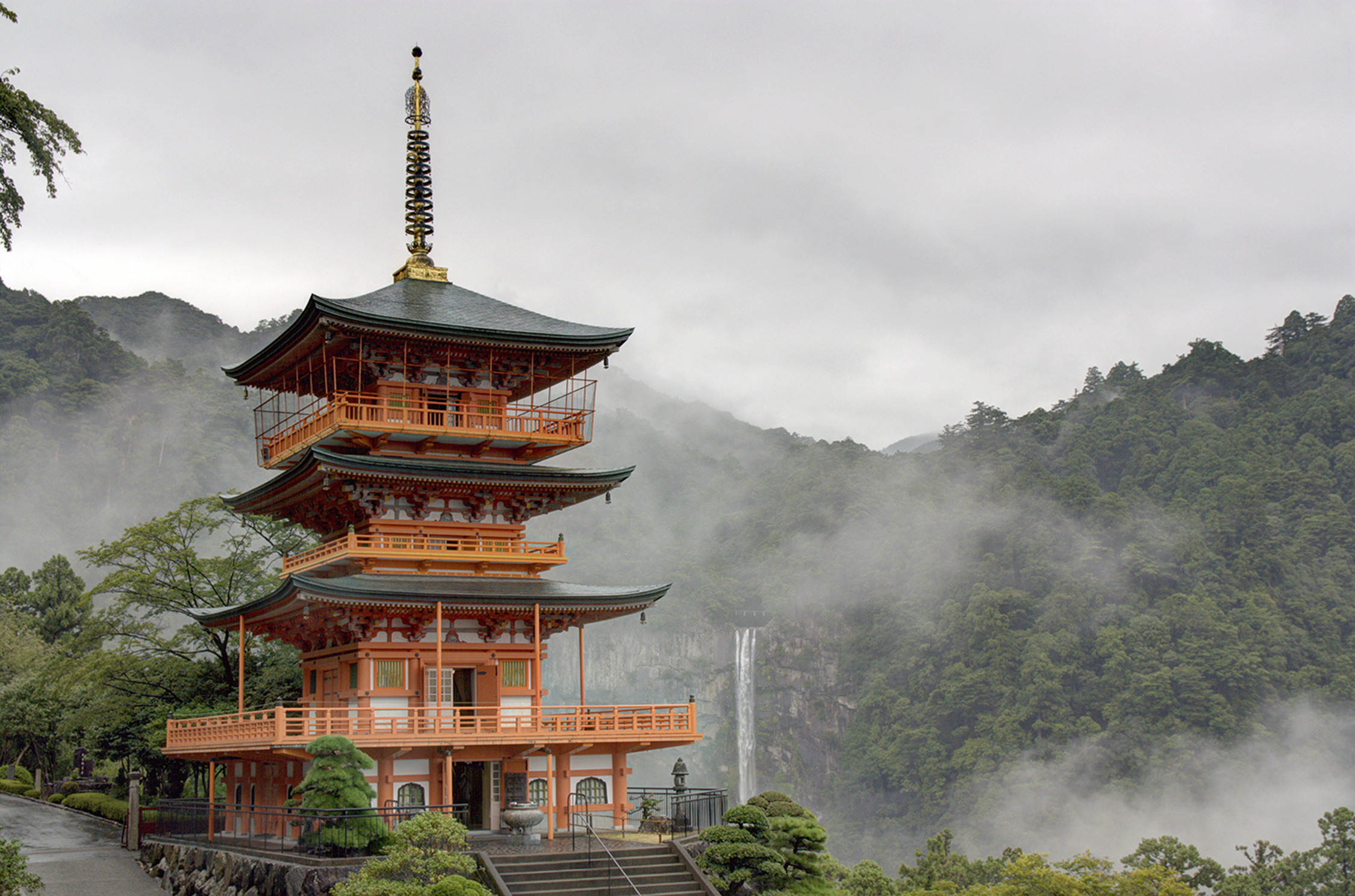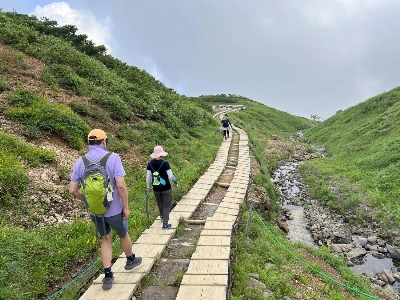An old tale from Kumano tells of a hunter who was out one day with his dogs when he spotted a large boar. Stretching his bow, he took aim and loosed an arrow deep into the body of the beast. With its last strength, the boar fled and led the hunter to a yew tree at Oyunohara, where it lay down and died. After gorging on its flesh, the hunter fell asleep under the tree, only to waken in the night to see that three moons — which revealed themselves to be manifestations of the three Kumano deities — had descended onto the tree.
Those gongen — native gods that merge indigenous beliefs with avatars of Buddhist deities — remain to this day as intrinsic to the verdant mountains of the Kumano region of the Kii Peninsula straddling parts of Mie, Wakayama and Nara prefectures as its rushing rivers, towering waterfalls and magnificent Pacific Ocean coasts.
Considered since time immemorial a mystical realm where the boundaries of the celestial and terrestrial worlds are blurred, Kumano — now a Unesco World Heritage Site — has for a millennia and more been crisscrossed by a network of pilgrimage routes. As well as linking with the ancient capital of Kyoto and other sacred sites in the Kansai region of Honshu, these routes also connect the Kumano Sanzan, the Three Grand Shrines of Kumano — Hongu- Taisha, Nachi-Taisha and Hayatama-Taisha.


















With your current subscription plan you can comment on stories. However, before writing your first comment, please create a display name in the Profile section of your subscriber account page.